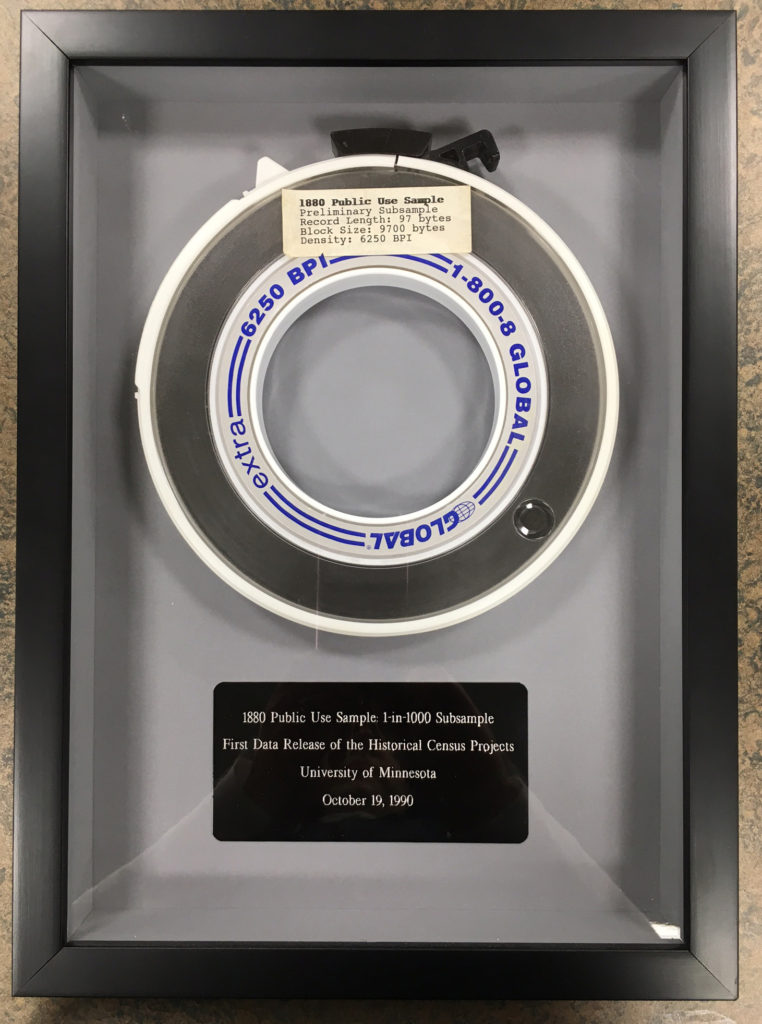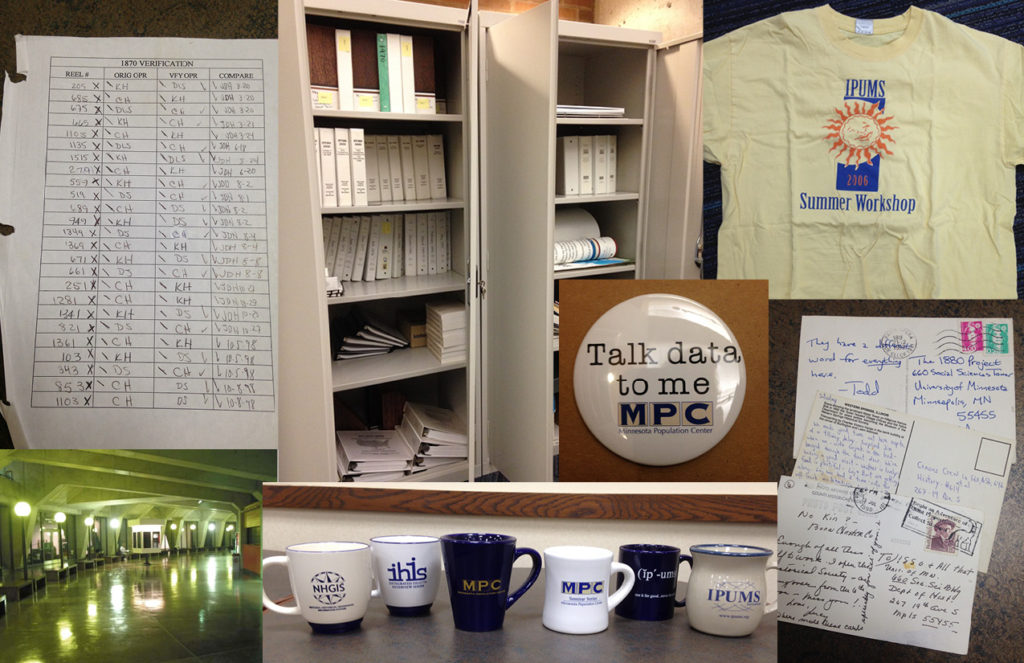
In February 2015, the MPC approved the organization of an institutional archive to preserve materials based on oral history interviews, administrative records, procedures for data development and integration, and memorabilia. The goal of the Minnesota Population Center Archive is to collect, organize and preserve materials documenting the growth and development of the MPC and the IPUMS and their contribution to social science infrastructure.
Human institutional memory is a powerful primary source. To ignore or diminish its importance is to lose a vital foundational piece of social science infrastructure. Longevity presents curatorial challenges to preserving institutional memory. As institutions grow and become more complex in their structure and procedures, departure of key staff becomes inevitable, and implementing procedures for transferring institutional knowledge is essential. To preserve and transmit knowledge from long-time personnel, the Minnesota Population Center is collecting oral histories of founding members and key past and current staff members. To date, over two dozen oral histories have been recorded. University of Minnesota and Bethel University undergraduate students are transcribing the interviews.
After nearly two decades of intense collecting and developing of demographic data resources the Minnesota Population Center has also recognized the need to archive its administrative documents. While the MPC has been meticulous regarding managing and archiving its demographic data, the organization of digital and manuscript administrative reports, correspondence, memoranda and working papers has been less intentional. The pace and scale of MPC grant writing and data production has produced a flurry of administrative materials. The challenges to curating such institutional documents that are constantly being produced, used and reiterated in a social science environment are not insurmountable, but the work requires vigilance. The MPC recognizes that the biggest impediment to archiving and cataloguing such materials is not lack of will, but rather a mechanism by which the selection, preservation and maintenance of these important digital and manuscript assets will naturally occur and be sustained in a fast-paced work environment.

The MPC staff is further working to collect and archive procedural snapshots of data development and construction for each data integration project. This effort is threefold. First, data integration projects are projecting the server capacity necessary to adequately archive raw source materials and data at designated time intervals (“snapshots”). Second, annual data releases are archived at ICPSR. Third, the MPC has recently implemented the use of “change logs” to keep a running documented inventory of changes to currently public variables for each data integration project.
Finally, the MPC archive curates a memorabilia collection. Newspaper clippings, ephemera, photographs and promotional items such as mugs, water bottles and t-shirts are preserved. Rotating display items, ranging from magnetic tapes of the original U.S. census public use files to winter scarves given to participants in a January IPUMS user workshop, is planned for the near future.
The histories of the institutions that produce data for social science research deserve our attention, so we better understand and appreciate the process behind the production. At the institutional level, active curation of digital and manuscript administrative assets is a vital component to sustaining our social science infrastructure. As a relatively new contributor to social science infrastructure through its IPUMS projects, the Minnesota Population Center at the University of Minnesota is a test case for examining how an institution can preserve its history for its present as well as future work and research. Collecting human institutional memory through oral history, systematically collecting and archiving digital and manuscript administrative records, implementing snapshots of data development, and curating memorabilia all contribute to this important effort at historical preservation. These examples illustrate the curation and record management challenges of institutions committed to growing and sustaining our social science infrastructure.
Story by Diana Magnuson
